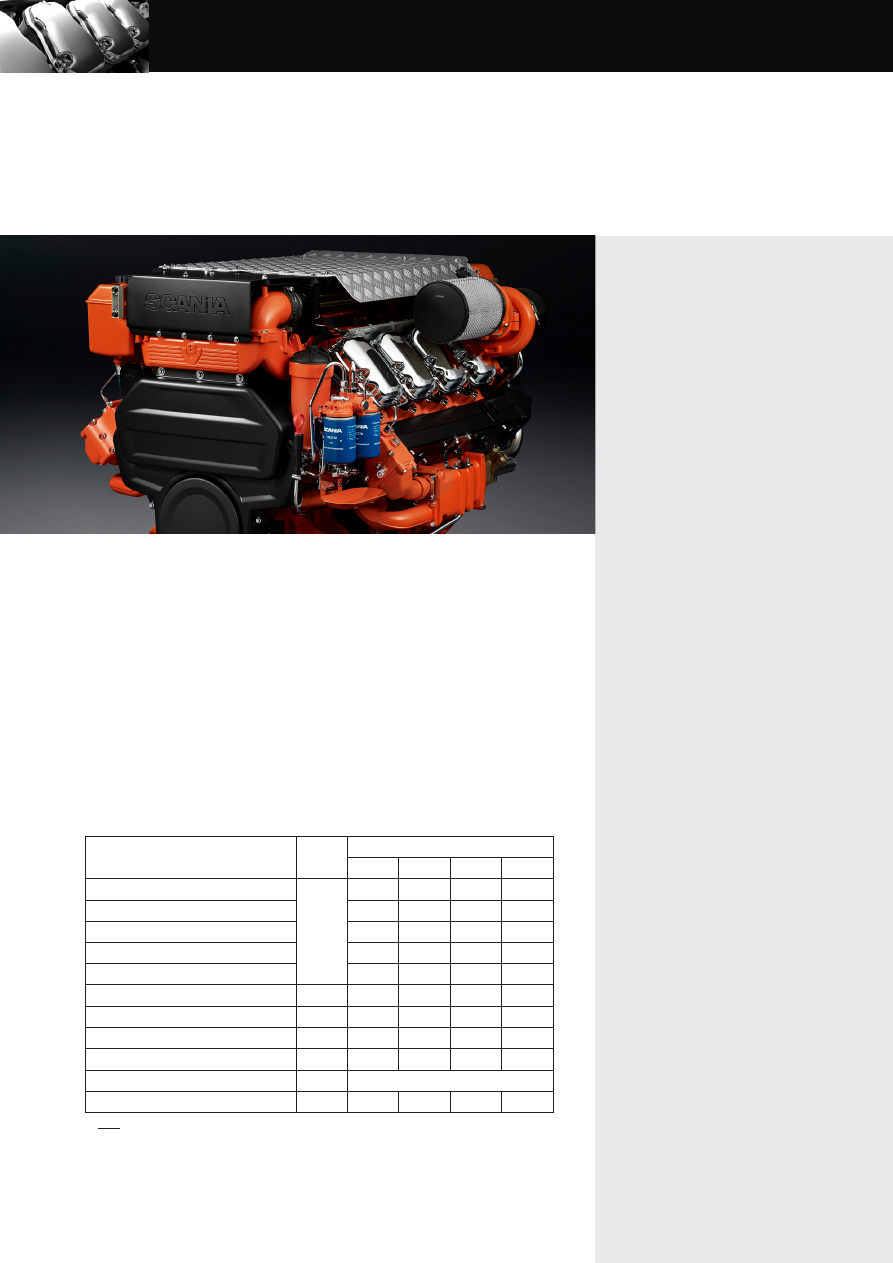SCANIA MARINE ENGINES (specification) - part 9

Standard equipment
• Scania Engine Management System, EMS
• Unit injectors, PDE
• Twin turbochargers, heat insulated
• Fuel pre-filter with water separator
• Fuel filter
• Oil filter, full flow
• Centrifugal oil cleaner
• Oil cooler, integrated in block
• Oil filler, in valve cover
• Deep front oil sump
• Oil dipstick, front
• Starter, 2-pole 7.0 kW
• Alternator, 2-pole 100A
• Flywheel SAE 14
• Silumin flywheel housing, SAE 1 flange
• Front-mounted engine brackets
• Catwalk and cover for belt transmission
• Closed crankcase ventilation
• Sea water charge air cooler
• Sea water pump
• Dual heat exchangers with expansion tanks
• Operator’s manual
Optional equipment
• Electrical base system
• Accelerator position sensor
• Control panel
• Instrument panel
• Scania EMS display
• Hydraulic pump
• Side-mounted PTO
• Front-mounted PTO
• Exhaust connections
• Engine heater
• Power pack engine brackets
• Stiff rubber suspension
• Air cleaner
• Studs in flywheel housing
• Reversible fuel filter
• Low coolant level reaction
• Variable idle speed setting
• Low oil sump
• Oil draining with pump
• Oil level sensor
• Bilge pump
SCANIA MARINE ENgINEs
DI16 077M. 736 kW (1000 hp)
IMO Tier II, Us Tier 2, EU stage IIIA
The marine engines from Scania are based on a robust design with a strength
optimised cylinder block containing wet cylinder liners that can easily be exchanged.
Individual cylinder heads with 4 valves per cylinder promotes repairability and fuel
economy. The engines are type approved in all major classification societies.
The engine is equipped with a Scania developed Engine Management System,
EMS, in order to ensure the control of all aspects related to engine performance.
The injection system is based on electronically controlled unit injectors that gives low
exhaust emissions with good fuel economy and a high torque already at low revs.
The engine can be fitted with many accessories such as air cleaners, PTOs, transmis-
sions and type approved instrumentation in order to suit a variety of installations.
This specification may be revised without notice.
Engine speed (rpm)
Rating
1200
1500
1800
2300
Gross power, full load (kW)
Patrol
craft
short*
305
449
610
736
Gross power, full load (hp, metric)
415
610
830
1000
Gross power, propeller curve (kW)
105
204
353
736
Gross power, propeller curve (hp, metric)
142
278
480
1000
Gross torque (Nm)
2427
2857
3236
3056
Spec fuel consumption. Full load (g/kWh)
204
200
200
228
Spec fuel consumption. 3/4 load (g/kWh)
199
199
203
218
Spec fuel consumption. 1/2 load (g/kWh)
200
207
208
220
Spec fuel consumption. Propeller curve (l/h)
25
52
90
200
Optimum fuel consumption (g/kWh)
197
Heat rejection to coolant (kW)
244
328
437
676
*) Note! Optimized for Water Jet applications. Not intended for conventional propeller use.
Patrol craft short: Intended for intermittent use where rated power is available 1 hour/12 hours
period. Between full load operations engine rpm must be reduced at least 10% from max. obtained
rpm. Accumulated total service time max. 1200 h/year.